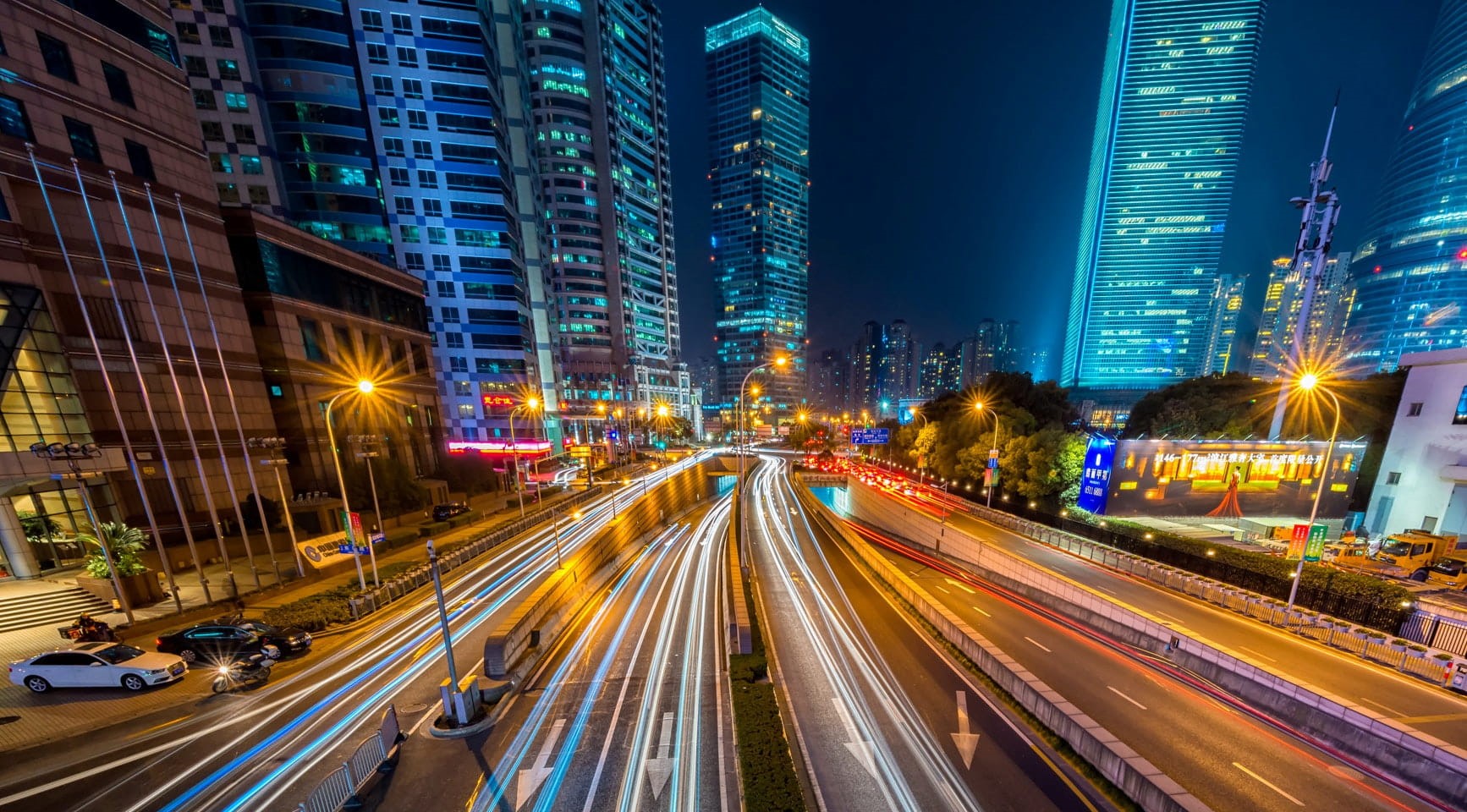In a “smart city,” existing networks and services are enhanced with digital technologies for the benefit of locals and businesses. A smart city does more than utilize digital technologies to better manage resources and reduce pollution. It should also entail improved water supply and waste disposal systems, better urban transportation networks, more effective building lighting and heating systems, and so much more.
Defining Chinese smart cities
Defining a smart city is not an easy feat. Currently, there is no clear definition for smart cities whether in China or abroad. However, smart cities in China can be analyzed from three different dimensions.
Technical level
A smart city promotes intelligent urban design, building, management, and services by utilizing new-generation information technologies including the Internet of Things (IoT), cloud computing, and big data. This dimension places emphasis on how information technology and core system data help the development of smart cities.
Urban development level
A smart city is a complete approach to urban development that combines urban operation management, industrial growth, public services, and administrative effectiveness. It is a high-end form of modern urban development.
Social level
A smart city is an urban ecosystem comprised of people, companies, and governments that is supported by modern technology. It is a digital network that manages intricate systems like urban geography, resources, ecology, environment, people, and economy. It also performs decision-making and service-related tasks.
On the global stage, China is leading the development of smart cities
The concept of smart city became popular in China in 2012 when the Ministry of Housing and Urban-Rural Development promulgated the “Interim Measures for the Administration of National Smart City Pilot Projects”.
The market size of smart cities in China is expected to increase with a CAGR of 14.5% from 2018 to 2023. The value of the Chinese smart city industry is estimated to grow from US$30.4 billion in 2018 to US$59.9 billion in 2023.
China is leading the construction of smart cities in the world
According to a Deloitte report, China is the most active country in terms of the construction of smart cities in the world. In 2018, the number of China’s pilot projects of smart cities accounted for 48% of the globe.
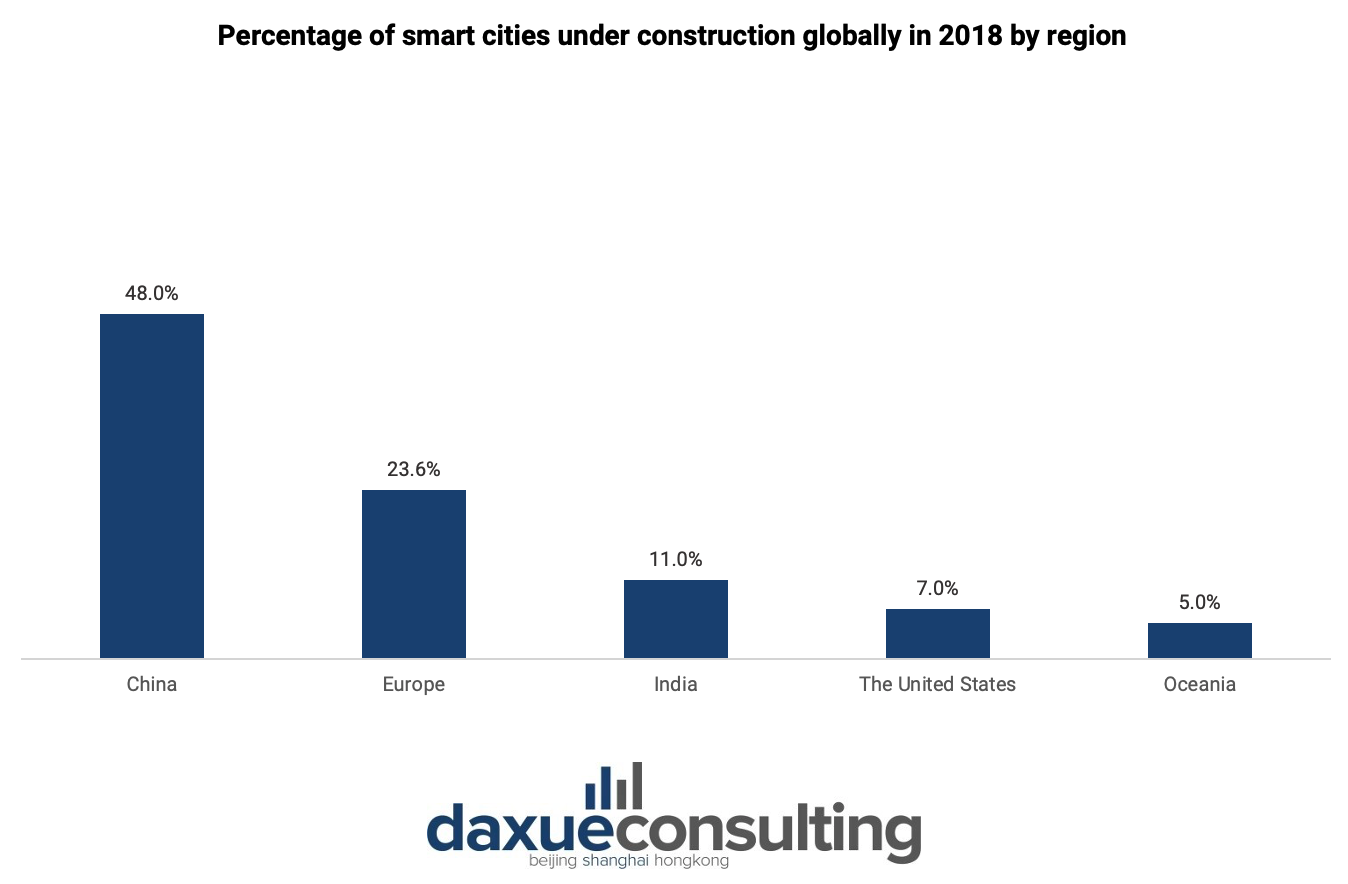
There have been numerous smart city pilot projects across China, and the number is rising. In 2020, China had more than 900 pilot projects with around 290 cities participating in the mentioned projects including Beijing and Shanghai.

Urbanization is pushing the growth of smart cities
One of the factors that influence the development of smart cities is urbanization. According to the United Nations, 55% of the world’s population lives in urban areas in 2018. This number is expected to reach 68% by 2050 with India, China, and Nigeria accounting for 35% of the projected growth of the world’s urban population during the period. Discussing China in specific, the number of people living in urban cities reached 65.2% in 2022 and is expected to reach 75% in 2030.
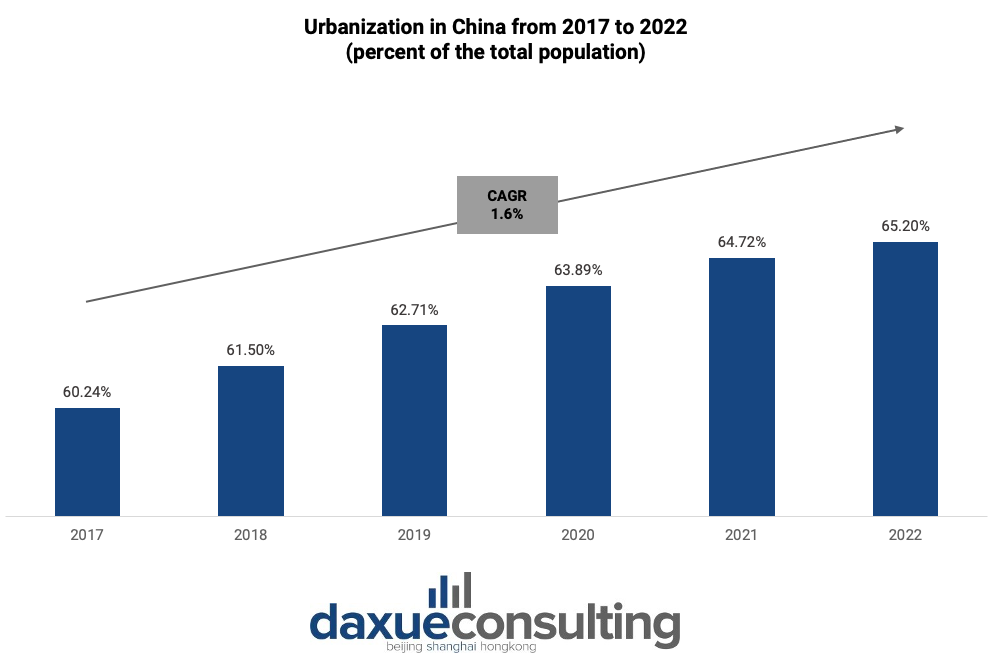
With more people moving into metropolitan districts, emissions and energy usage will keep on rising each year. Therefore, it is more important than ever to have smarter urban transportation systems, eco-friendly water treatment facilities, and energy-efficient structures. Programs and initiatives for smart cities can help in this situation.
Exploring Chinese smart cities
To investigate the components of a smart city in China, we can look at the concept of “new infrastructure”. The concept was first introduced in 2018 during the Central Economic Work Conference. “New infrastructure” is driven by technological innovation, based on information networks, and is aimed to build the foundation of high-quality development needs.
The National Development and Reform Commission announced in April 2020 that “new infrastructure” includes three aspects: information infrastructure, integrated infrastructure, and innovative infrastructure.
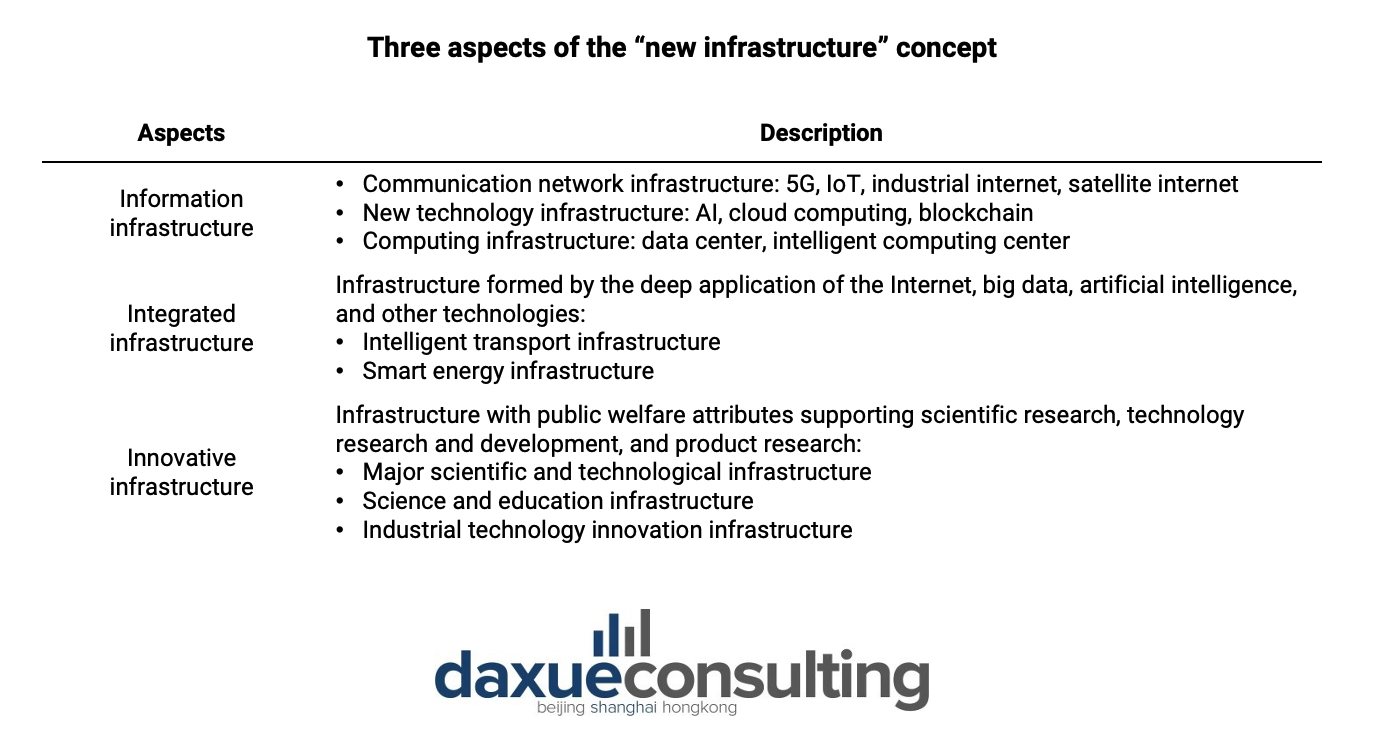
The relationship between smart cities and “new infrastructure” development is inextricable. The realization of the value of “new infrastructure” is greatly influenced by the demand from smart cities. At the same time, the “new infrastructure” is a crucial driving force for the development of smart cities. This is because the “new infrastructure” would be able to facilitate many smart applications that one would find in a smart city such as smart parks, smart transportation, smart energy, and so on.
Smart city systems and smart applications
A smart city is a complex and interactive system. Various resource elements are optimally allocated and work together to promote the smart operation of the city. At the center of it all, there is the City Comprehensive Management and Command Center, the “brain” of the city that is in charge of collecting and sharing various resources, intelligent decision-making, and cross-departmental coordination and linkage.
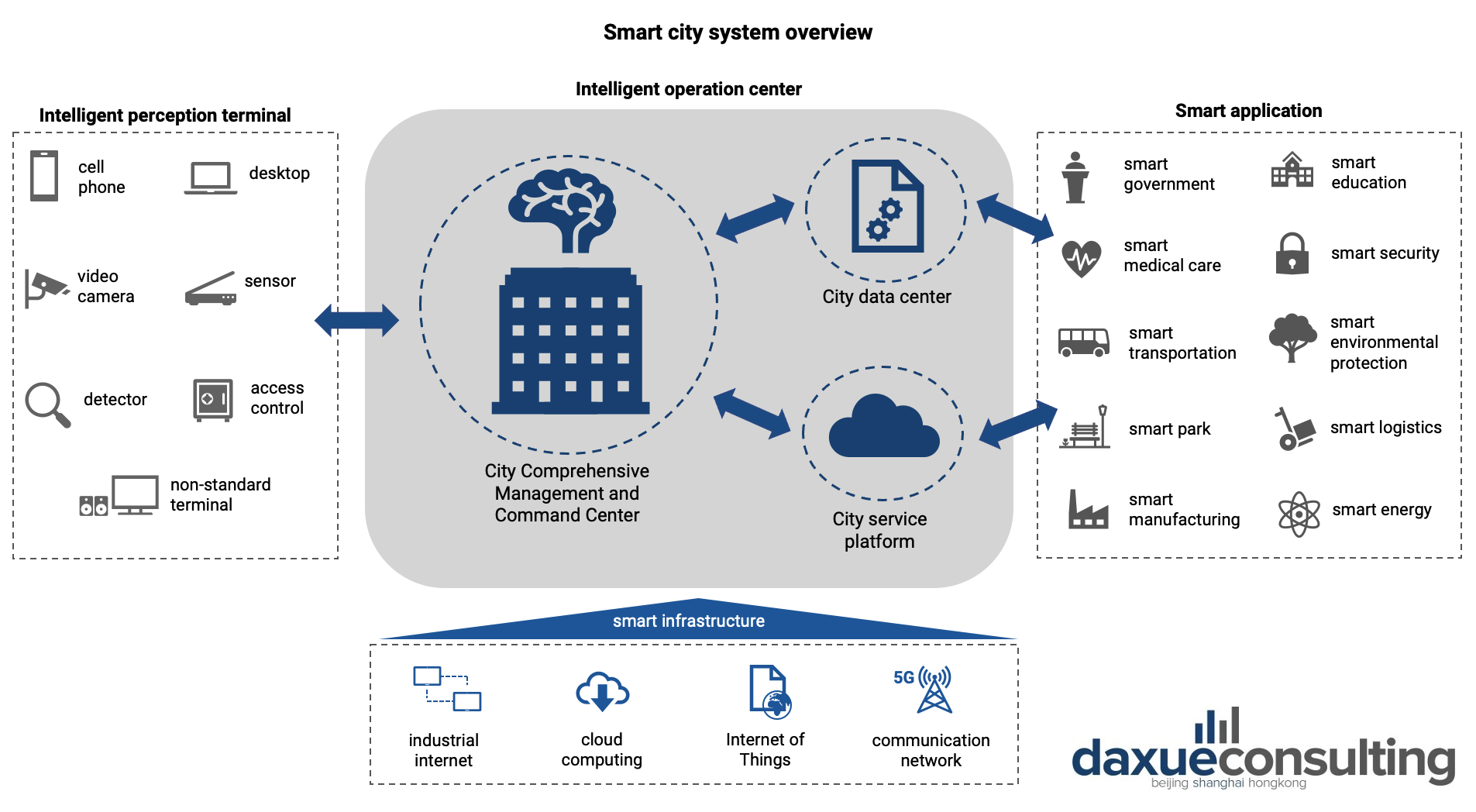
According to its functions, Chinese smart city applications can be divided into four divisions: people’s livelihood services, urban governance, industrial economy, and ecological livability.
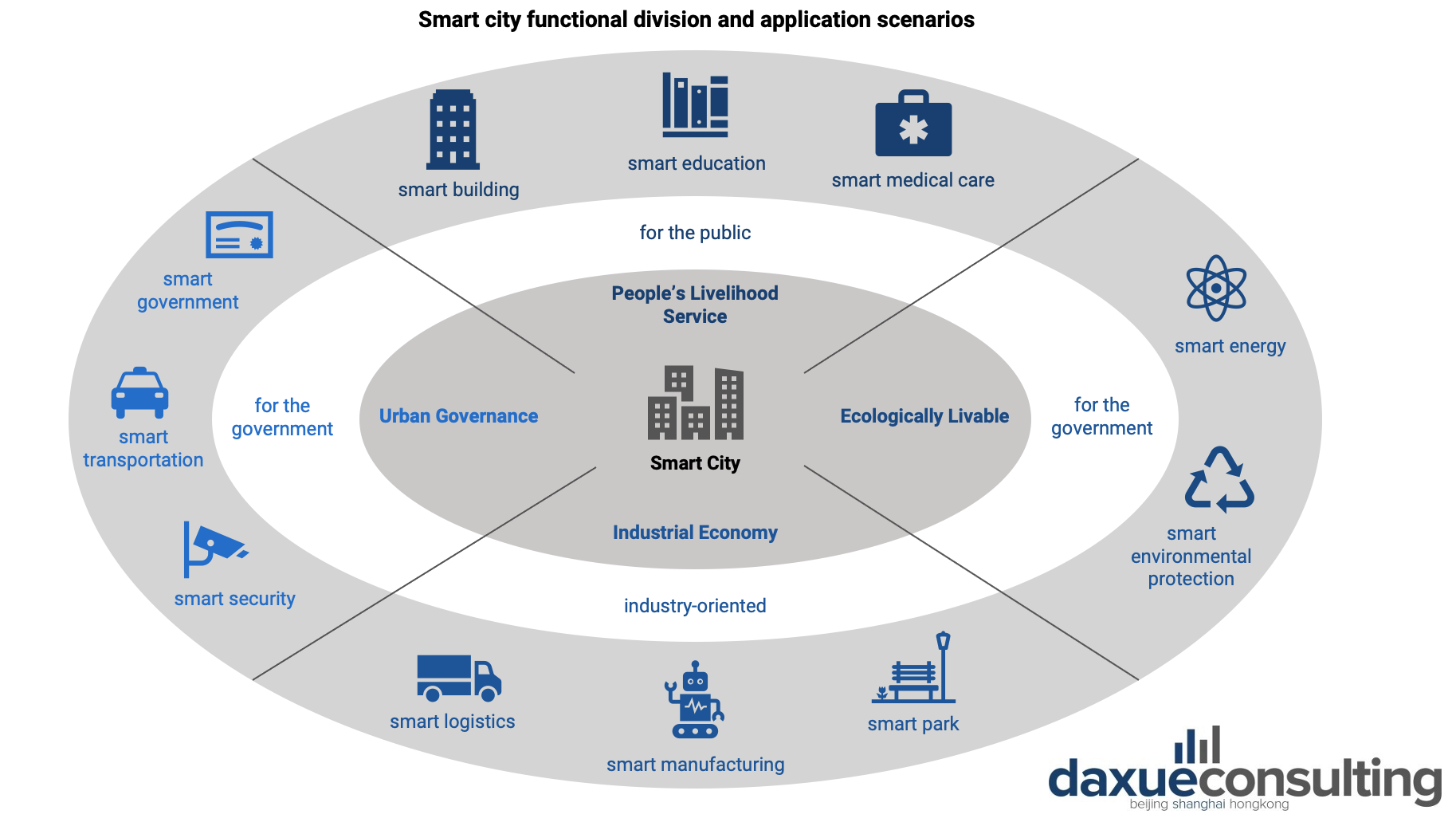
Inside of Chinese smart cities: Chinese smart parks
Smart parks are an essential component of smart cities in China. Smart parks use information technologies such as 5G, IoT, and big data to achieve smart enhancements. Smart parks in China have gone through several stages of development.
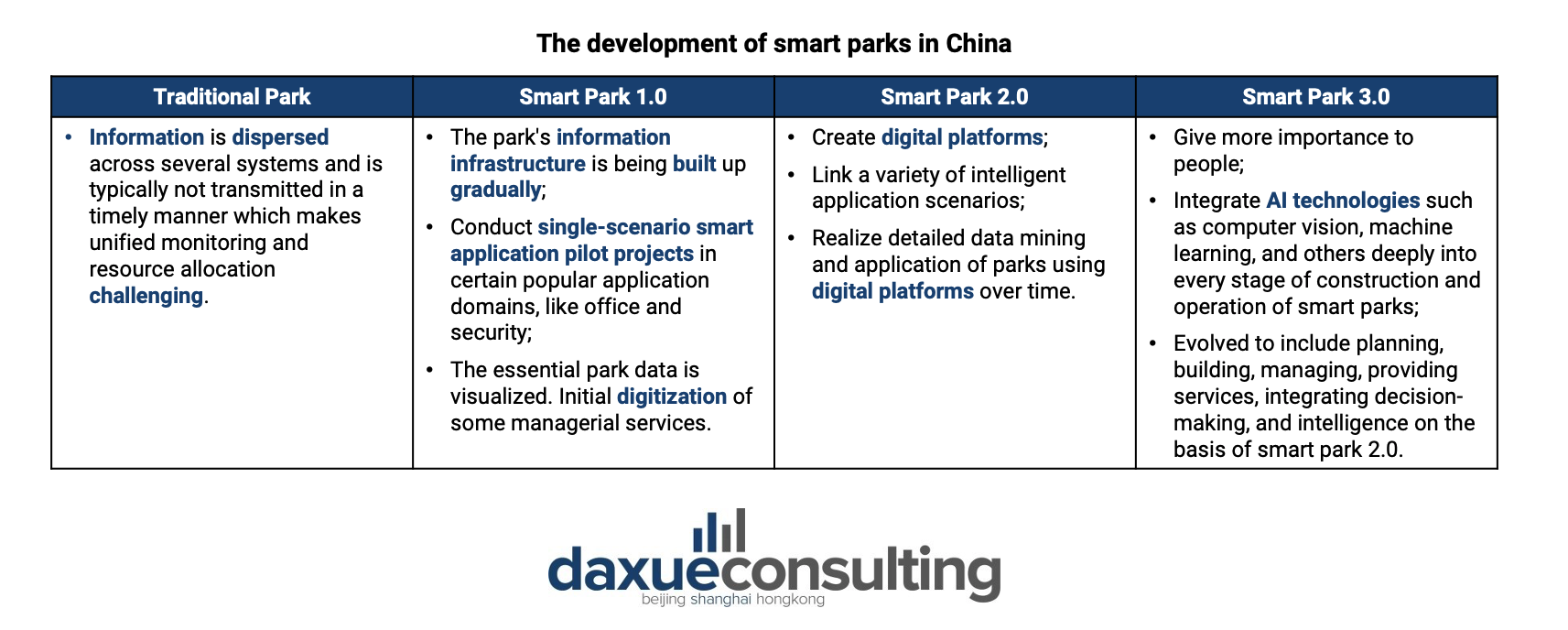
The construction and operation of Chinese smart parks can be divided into three: planning and design (the concept, space, system, and other designs of smart parks), construction and deployment (construction, terminal installation, system deployment, etc.), and management and operation (asset management, operation service, system maintenance, etc.).
Its construction blueprint can also be divided into three layers: a foundation layer, a platform layer, and an application layer. Perception terminals, network transmission tools, etc. are all part of the foundation layer. The foundation platform and management platform are the two fundamental components of the platform layer. The application layer consists of an interactive user interface and application system for diverse scenarios.
In the smart park industry, the midstream and upstream sectors are considered the core of the industry chain.
The majority of smart park suppliers in China are located in the eastern region of the nation. The core players of smart parks in China can be divided into three categories:
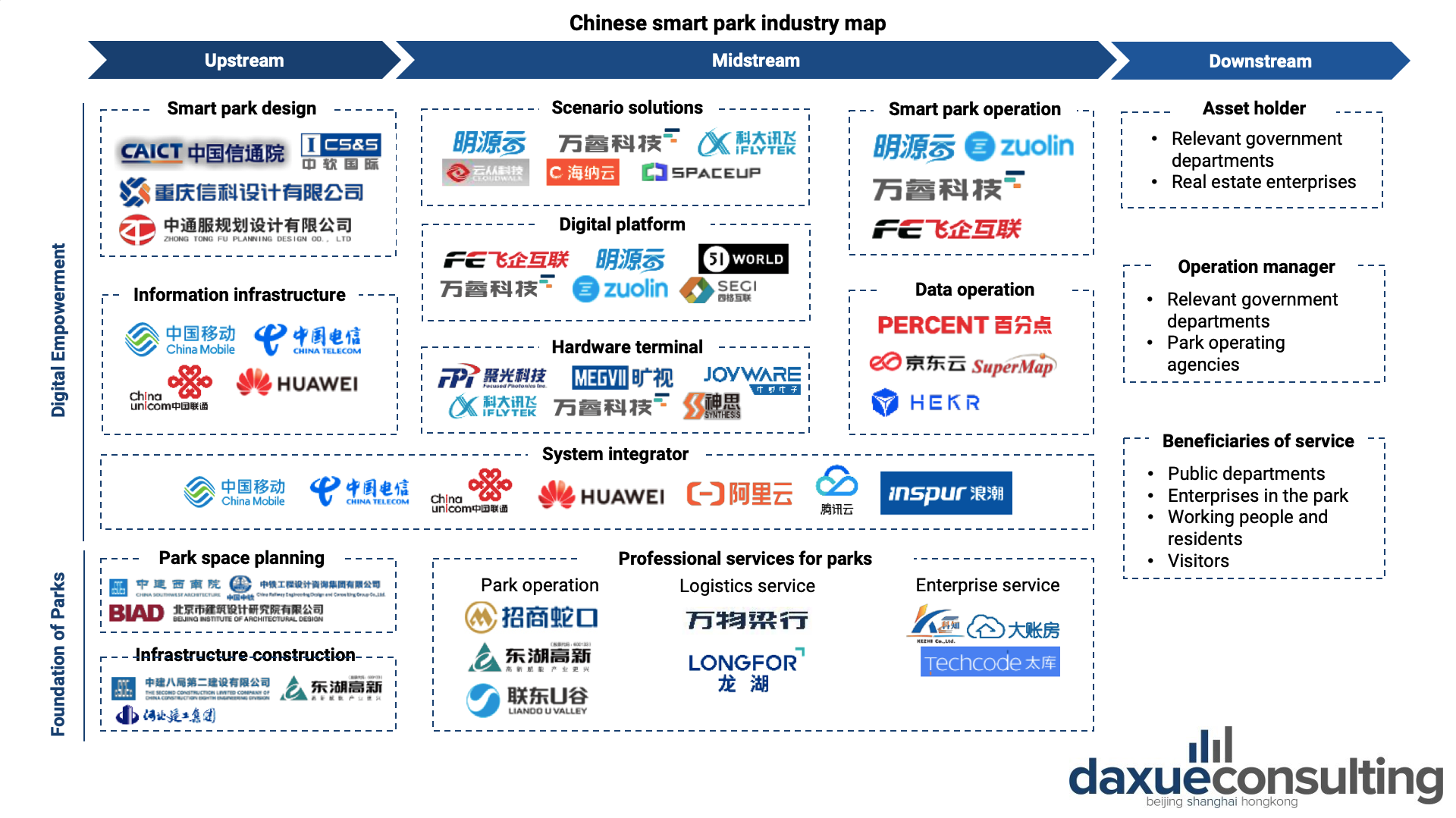
System integrators
These firms are responsible for the underlying technical architecture, data infrastructure, network communication, and other products and services. Companies of this type are usually leading technology firms such as Huawei and China Unicom.
Solution providers
Typically, these players assume the role of general integrator or general contractor. They vaunt a broad range of systematic service capabilities, including intelligent platforms, software systems, hardware integration, as well as operation and maintenance services.
Professional platform providers
This type is comprised of emerging vendors with sectorial knowledge. Their primary focus is the creation and implementation of expert platforms for smart parks, and they typically follow a simple business model.
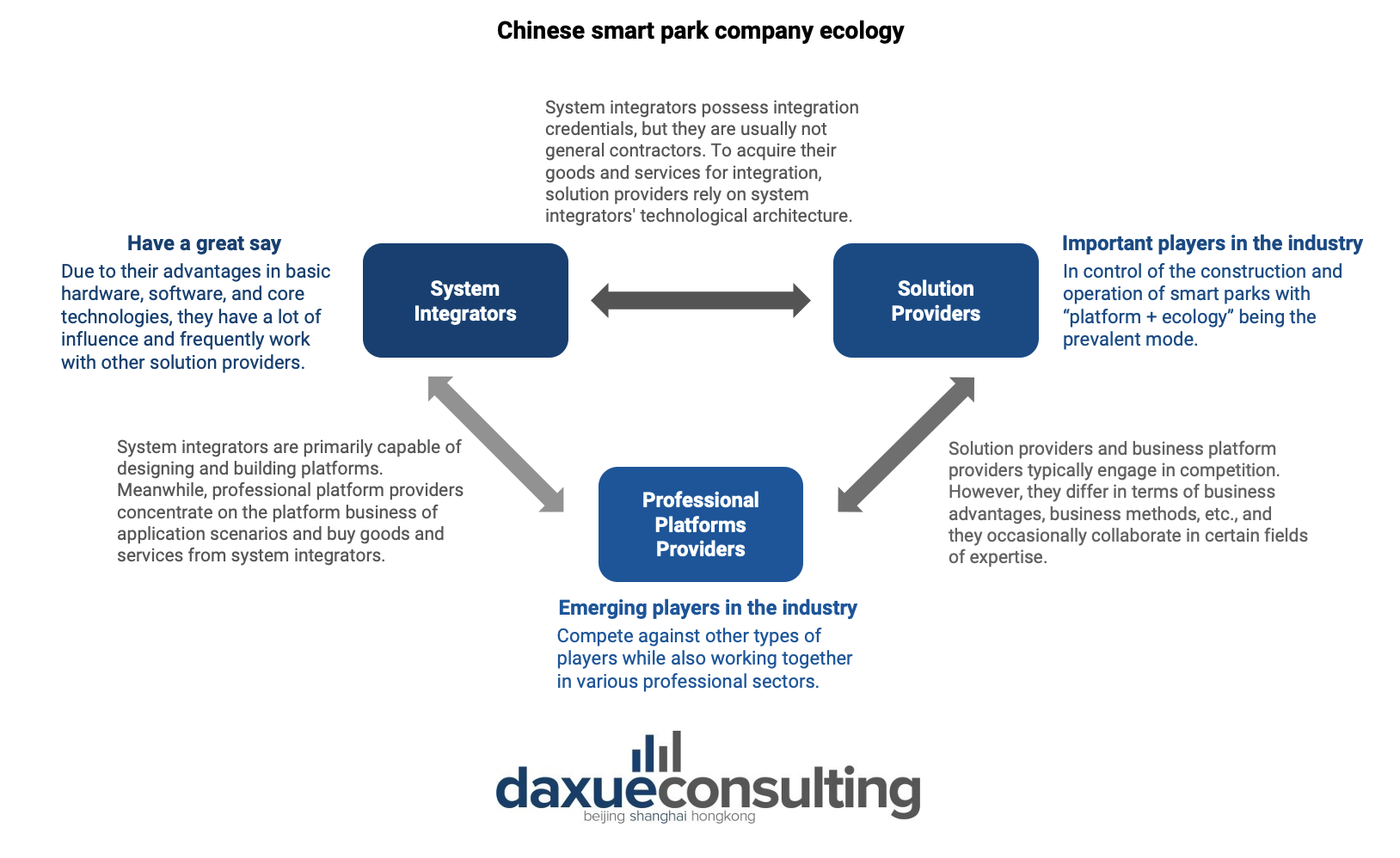
Discovering Chinese smart cities
There are numerous smart cities spread across all provinces in China. However, there exist significant differences between the east and the west as the majority of smart city pilots are located along the Yellow Sea and the Yangtze River Delta.
Nanjing
Nanjing ranked 10th by GDP in China in 2021. One of the first sectors targeted by the city is its transportation system, specifically the traffic volume, for its 8 million inhabitants. To reduce traffic congestion without incurring in the high cost of building new roads, a modern smart traffic system with sensors and radio-frequency identification chips was installed to collect information on people’s travel patterns, fare pricing, road conditions, and accessibility of the area. The data updates are then sent directly to smartphones.
There is also Sino-Singapore Nanjing Eco Hi-Tech Island, a cooperative initiative that makes use of Singapore’s know-how in urban planning for smart cities. All business and residential structures on the island will use renewable energy sources, mostly solar and hydrogen, to boast a minimal carbon footprint.
Shenzhen
Shenzhen was the 7th largest city in China and placed third among the cities with the highest GDP in the country in 2021. The Cantonese city is labeled as “China’s Silicon Valley” for its thriving computer and software industry. Many of the nation’s major heavyweights, like Huawei and Tencent, were founded here. Shenzhen has been able to integrate AI and big data technology across several industries, including transportation, healthcare, and social security, by taking advantage of such linkages. Recent instances include managing traffic lights based on real-time traffic conditions and using cloud data to assist hospitals to diagnose COVID-19 patients more quickly.
Shanghai
The Citizen Cloud is partly responsible for Shanghai’s status as one of the top smart cities in China and in the world. For city residents, this public service platform serves as a one-stop shop for more than 1,000 services, including personal information, health and medical care, public transit, social security, community life, tourism, and leisure activities.
In order to cope with traffic congestion, Shanghai has developed a framework for traffic intelligence that includes data on everything from public parking to road traffic. In the city, more than 1,600 LCD screens and 1,700 solar-powered signals are installed, providing precise arrival times for public transportation.
Unlocking the potential of Chinese smart cities:
- In China, the idea of developing smart cities first gained traction in 2012. It is anticipated that the Chinese smart city market will be worth US$59.9 billion by 2023.
- China established 759 smart city pilot projects in 2018, and by 2020, the number grew to 923.
- Information infrastructure, integrated infrastructure, and innovative infrastructure are the three main components of “new infrastructure,” and together they constitute the basis for the development of high-quality smart cities.
- Smart parks are an essential element of a smart city. In China, the construction and operation of smart parks can be broken down into three layers: planning and design, construction and deployment, and management and operation.
- In the Chinese smart parks industry, the midstream and upstream sections play the most crucial role. System integrators, solution providers, and professional platform providers make up the three main market players.
- Regions along the Yellow Sea and Yangtze River Delta have the highest concentration of smart city pilot projects.
Author: Regina Sukwanto


